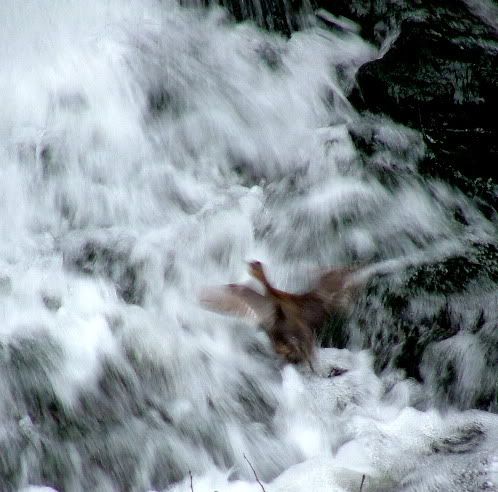

Video 1 - Dabchick versus Waterfall
Video 2 - Dabchick versus Waterfall
Video 3 - Dabchick versus Waterfall
He never quite made it.


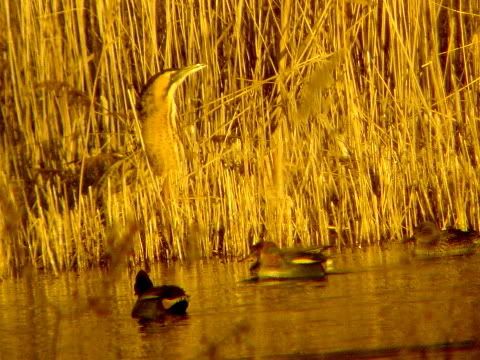
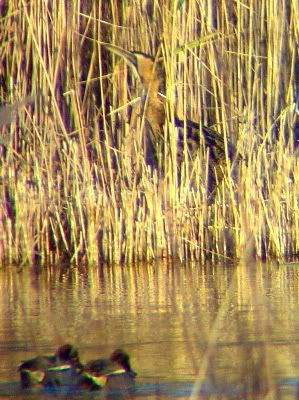 Their famed talent for transformation is well founded, and we watched these birds seamlessly move from streaky egg-shape to towering serpent. It's quite remarkable, and quite typical of this highly charismatic species.
Their famed talent for transformation is well founded, and we watched these birds seamlessly move from streaky egg-shape to towering serpent. It's quite remarkable, and quite typical of this highly charismatic species.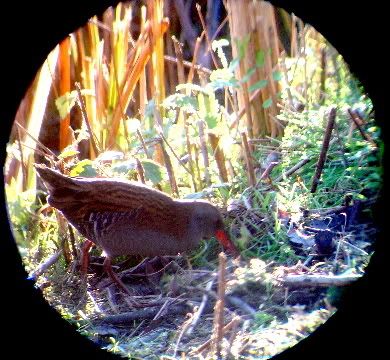 That other elusive bird of the reedbed Water Rail was similarly accommodating, indeed more so. I'd never previously heard of them coming to feeders, never mind seen it, but now I'm a believer. As the tits and finches scattered seed down onto the grass below, the Water Rail skulked and crept from the reeds, out into plain view to peck up the remnants, no more than ten yards from the hide.
That other elusive bird of the reedbed Water Rail was similarly accommodating, indeed more so. I'd never previously heard of them coming to feeders, never mind seen it, but now I'm a believer. As the tits and finches scattered seed down onto the grass below, the Water Rail skulked and crept from the reeds, out into plain view to peck up the remnants, no more than ten yards from the hide.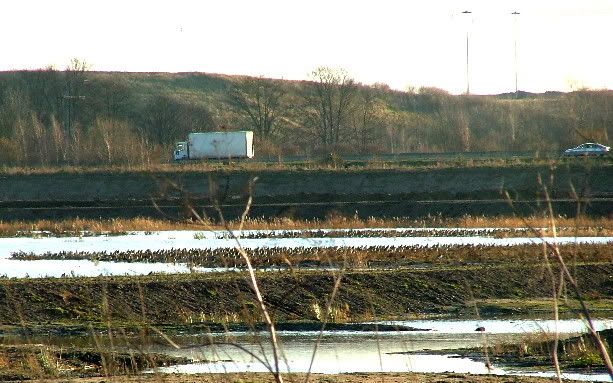 On the far side of the reserve beneath the main road into Doncaster, 2,000-3,000 Golden Plover roosted in the afternoon with smaller numbers of Lapwing.
On the far side of the reserve beneath the main road into Doncaster, 2,000-3,000 Golden Plover roosted in the afternoon with smaller numbers of Lapwing.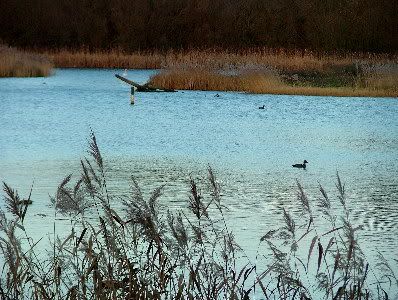
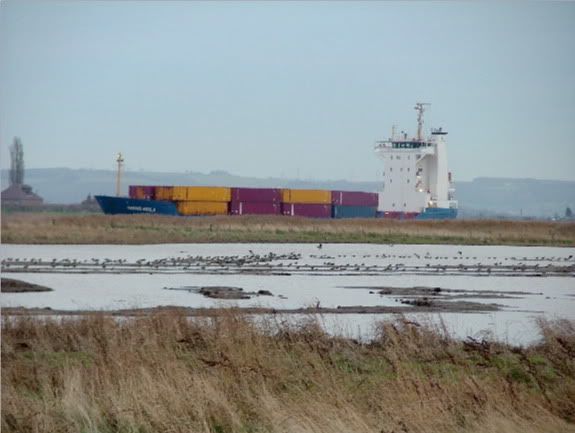 We're very near the inland port of Goole at Blacktoft, so pacing container ships are common.
We're very near the inland port of Goole at Blacktoft, so pacing container ships are common.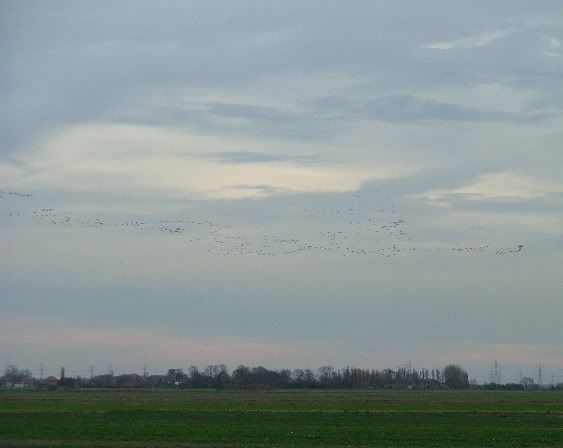 The Pinkies.
The Pinkies.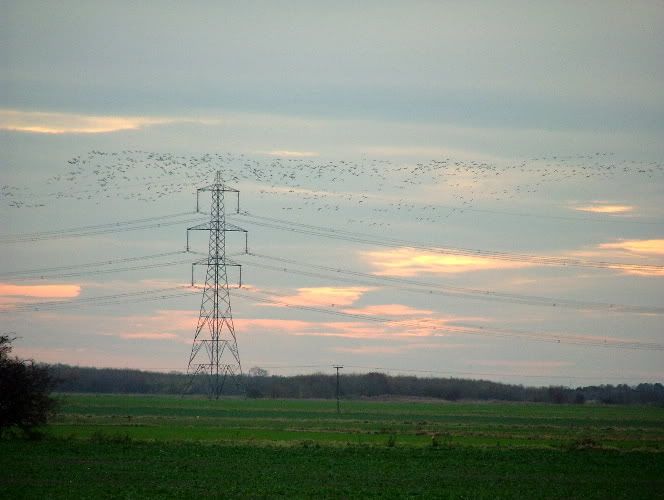
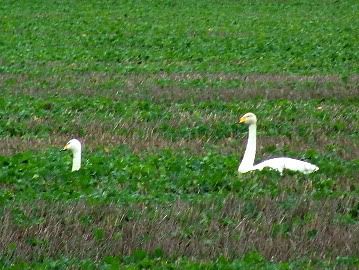 Locally rare a couple of Whoopers were in fields adjacent to the reserve.
Locally rare a couple of Whoopers were in fields adjacent to the reserve.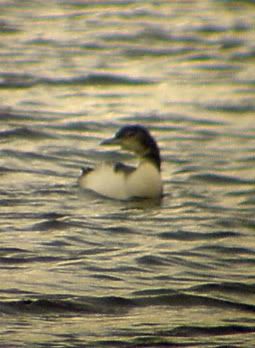
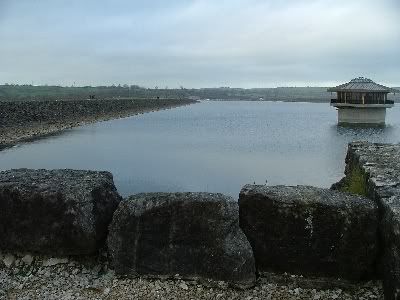 The GND has been there most of the week so word had gotten around and we happily guided four or five other birders to the rarity. You know you have a special bird when people don't even have to tell you what species they're looking for, a simple 'is it about?' is enough.
The GND has been there most of the week so word had gotten around and we happily guided four or five other birders to the rarity. You know you have a special bird when people don't even have to tell you what species they're looking for, a simple 'is it about?' is enough. Marvellous clear skies yesterday for our trip to Rutland. Although no megas were around we did see what I tend to think of as glamour birds, those that are a little scarce and very handsome - Goosander, Goldeneye, Red Kite, even Pintail falls into that category for me. Four very decent lifers for my girlfriend in her first year of birding.
Marvellous clear skies yesterday for our trip to Rutland. Although no megas were around we did see what I tend to think of as glamour birds, those that are a little scarce and very handsome - Goosander, Goldeneye, Red Kite, even Pintail falls into that category for me. Four very decent lifers for my girlfriend in her first year of birding.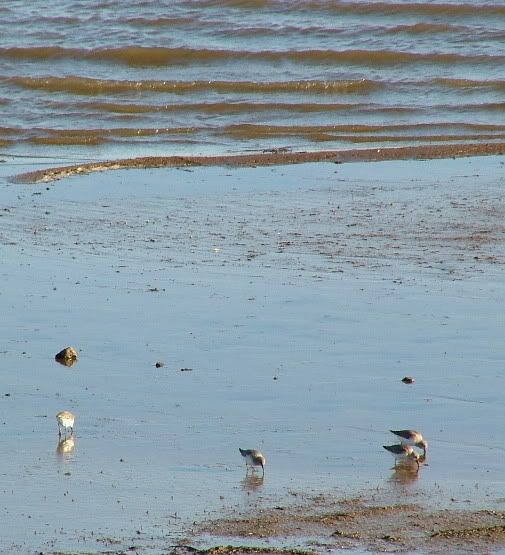 We chose Rutland in hopes of seeing Bittern, since on the Birdguides.com website one had been regularly reported at the site. No luck on the day, but I think we'll continue to keep an eye on that website, seems like the premier source for the latest sightings news and bird photographs. It will probably help us to decide which destinations to choose and when, even if that means paying a subscription when the free account deadline runs out.
We chose Rutland in hopes of seeing Bittern, since on the Birdguides.com website one had been regularly reported at the site. No luck on the day, but I think we'll continue to keep an eye on that website, seems like the premier source for the latest sightings news and bird photographs. It will probably help us to decide which destinations to choose and when, even if that means paying a subscription when the free account deadline runs out.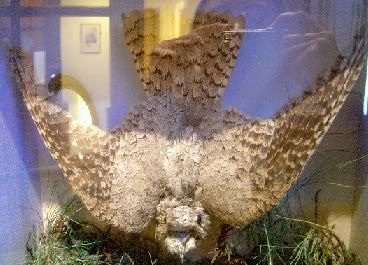
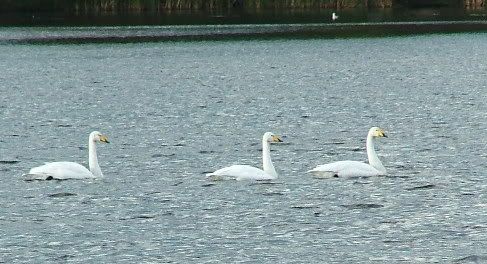 They probably won't stay the night so we rushed down to see them when we heard they were around. It's a new tick on our local list, a lifer for my girlfriend, and a very elegant one too.
They probably won't stay the night so we rushed down to see them when we heard they were around. It's a new tick on our local list, a lifer for my girlfriend, and a very elegant one too.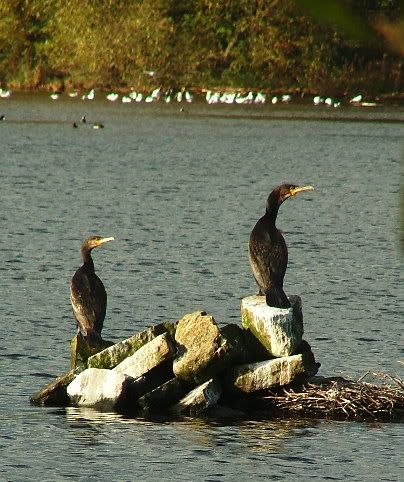 Cormorants are another species to arrive during the cold months, probably regional migrants from the reservoirs up in the Peak District. Welcome ones in mind, despite what the fisherman say.
Cormorants are another species to arrive during the cold months, probably regional migrants from the reservoirs up in the Peak District. Welcome ones in mind, despite what the fisherman say.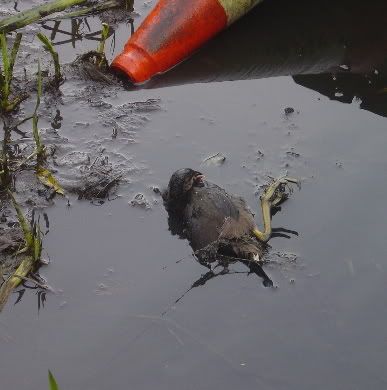 A misfortunate moorhen we found on the fringes of our local reservoir, tangled in discarded fishing line - as if the litter left by fishing parties isn't enough. I waded out to free the bird hoping there would be no lasting damage, hopes that were dashed when we discovered the line ran up into the moorhen's beak and down its throat. Doing what seemed best at the time we broke off the line to make it as short as possible, collected up the rest, and let the bird free to allow a private death without the stress of being in the open - it was very exhausted and clearly wasn't long for this world.
A misfortunate moorhen we found on the fringes of our local reservoir, tangled in discarded fishing line - as if the litter left by fishing parties isn't enough. I waded out to free the bird hoping there would be no lasting damage, hopes that were dashed when we discovered the line ran up into the moorhen's beak and down its throat. Doing what seemed best at the time we broke off the line to make it as short as possible, collected up the rest, and let the bird free to allow a private death without the stress of being in the open - it was very exhausted and clearly wasn't long for this world.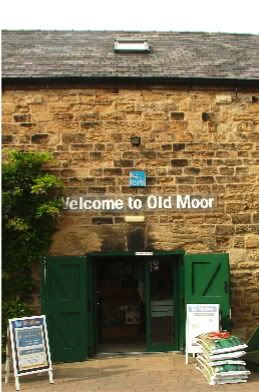 Situated between Barnsley and Doncaster, five or ten miles off of the M1, Old Moor is a recent addition to the RSPB's fleet of reserves and this was my first visit.
Situated between Barnsley and Doncaster, five or ten miles off of the M1, Old Moor is a recent addition to the RSPB's fleet of reserves and this was my first visit.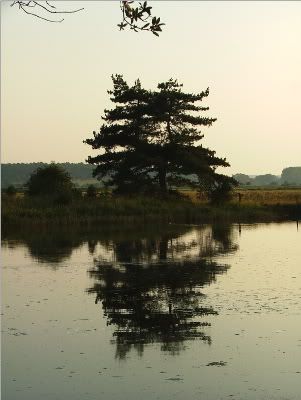
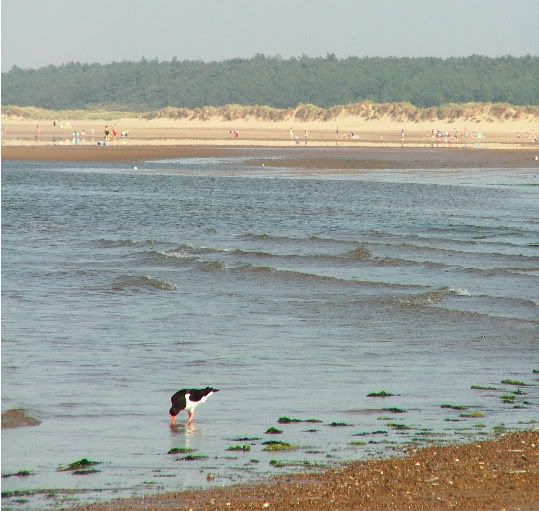
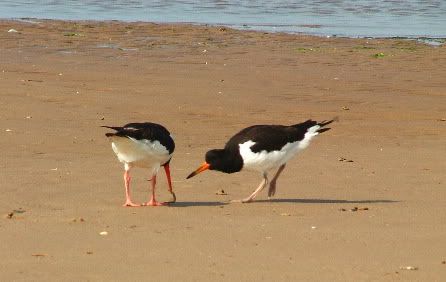
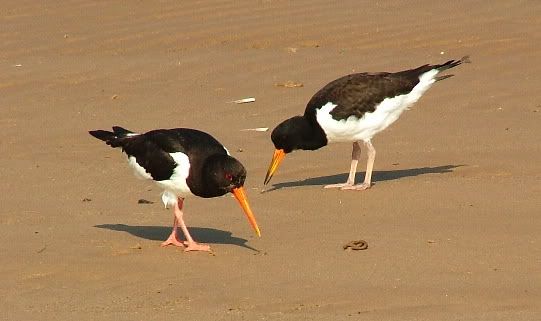

 Driving back home through the quiet farm roads brought us across this Barn Owl patrolling over one of the vast Norfolk wheatfields. We've found travelling along such lanes to be a marvellous birding tactic. It may not be very eco-friendly but there seems few other ways to cover so much rural habitat in a mobile bird hide.
Driving back home through the quiet farm roads brought us across this Barn Owl patrolling over one of the vast Norfolk wheatfields. We've found travelling along such lanes to be a marvellous birding tactic. It may not be very eco-friendly but there seems few other ways to cover so much rural habitat in a mobile bird hide.
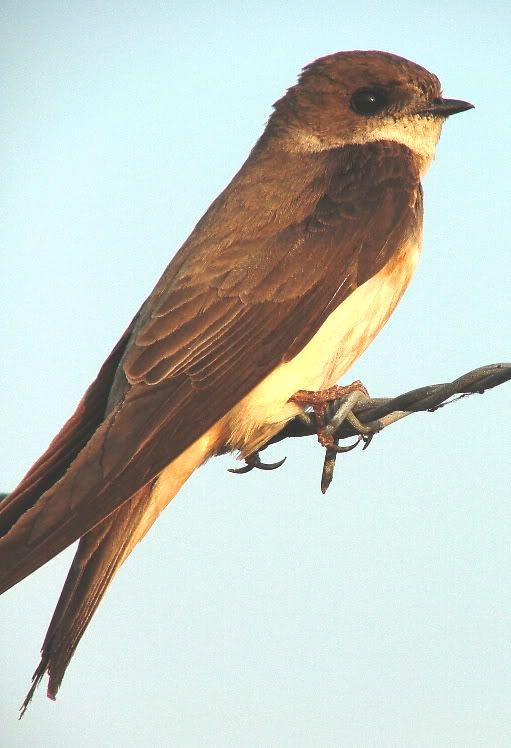

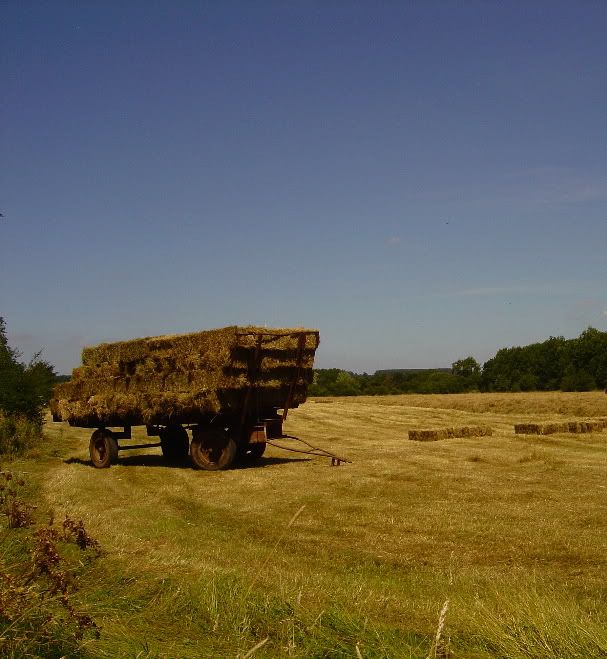 There are half a dozen posts I've meaning to type up about my recent bird trips, so I'll begin with the most recent - Rutland Water.
There are half a dozen posts I've meaning to type up about my recent bird trips, so I'll begin with the most recent - Rutland Water.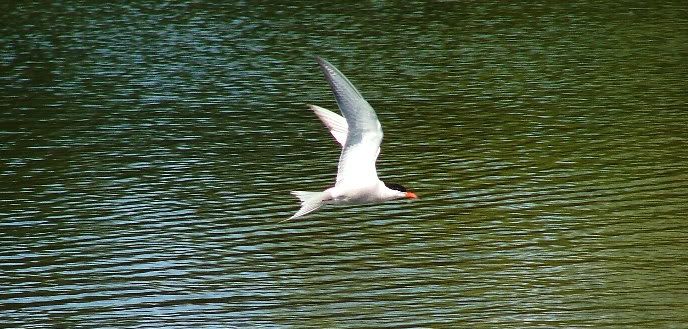
 The quiet roads back north offered almost as much wildlife as the reserve. Weaving back through the quiet country lanes and villages might be far slower than the A1, but when was the last time you saw hare, Red-legged Partridge and Sparrowhawk as you rushed along at 60mph on a dual carriageway?
The quiet roads back north offered almost as much wildlife as the reserve. Weaving back through the quiet country lanes and villages might be far slower than the A1, but when was the last time you saw hare, Red-legged Partridge and Sparrowhawk as you rushed along at 60mph on a dual carriageway?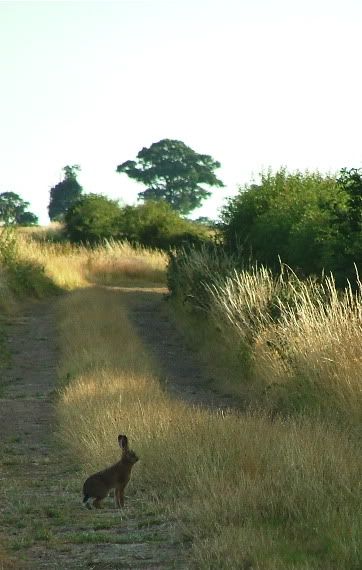
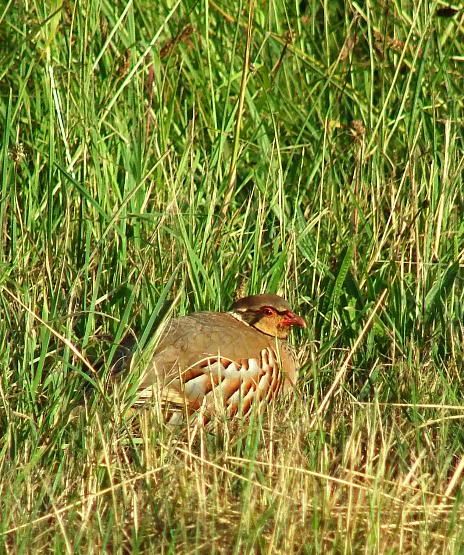

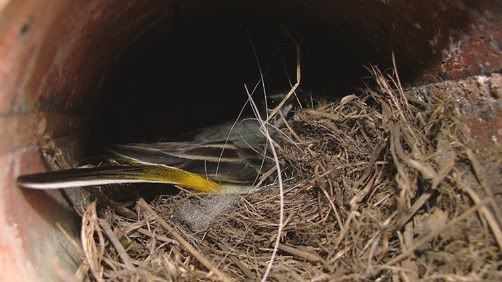 Travel along a winding farm road and under a disused rail bridge, and you just may find this Grey Wagtail. Running water is some distance away, which only increases the unlikelihood of the nest.
Travel along a winding farm road and under a disused rail bridge, and you just may find this Grey Wagtail. Running water is some distance away, which only increases the unlikelihood of the nest.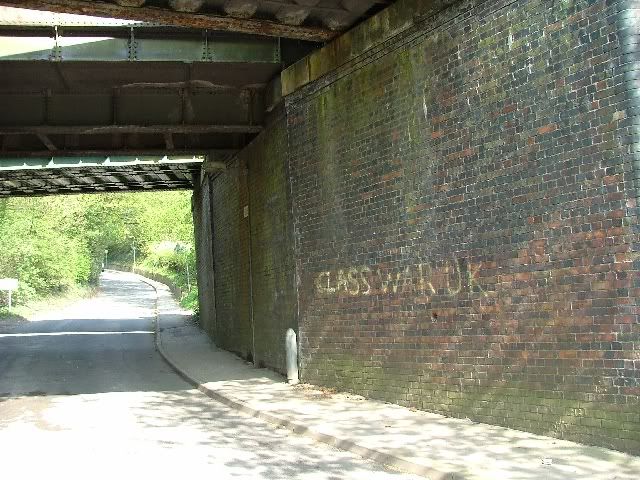 That's the hole under the R. Could these be politically-minded birds? Anarchists even?
That's the hole under the R. Could these be politically-minded birds? Anarchists even?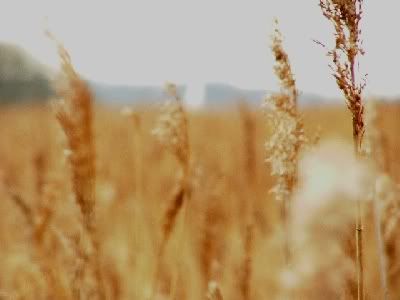 NWT Hickling Broad
NWT Hickling Broad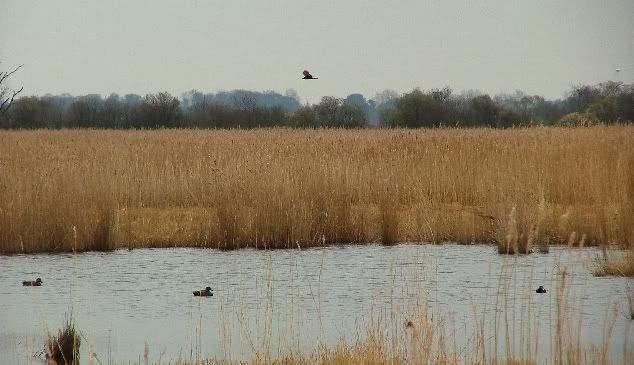
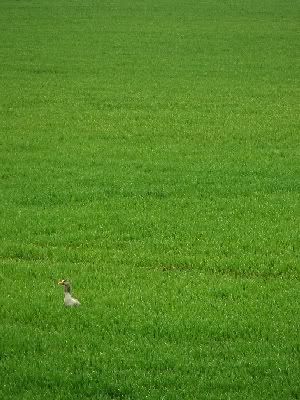
 We've seen several of these bottle-green-black pheasants along that stretch of road, birds presumably released during the shooting season.
We've seen several of these bottle-green-black pheasants along that stretch of road, birds presumably released during the shooting season. Then along the fence a pair of shy wild Mandarin Ducks turned up, perched along the top feeding from the seed pots.
Then along the fence a pair of shy wild Mandarin Ducks turned up, perched along the top feeding from the seed pots.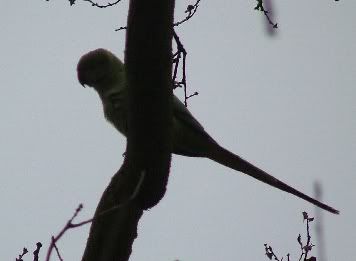 Such a surprising silhouette to find wild in Britain.
Such a surprising silhouette to find wild in Britain.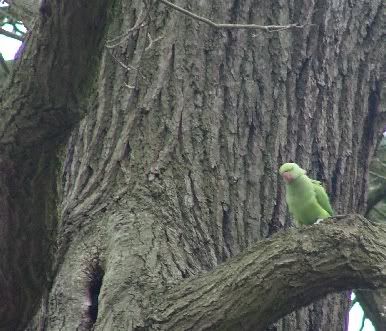
 Admittedly not great shots of the parakeets, but you get the idea.
Admittedly not great shots of the parakeets, but you get the idea.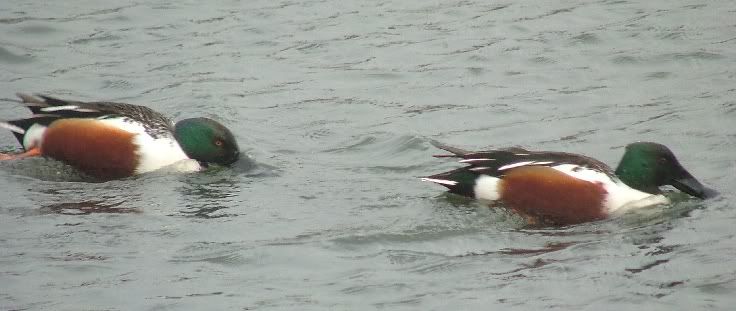 Shoveller
Shoveller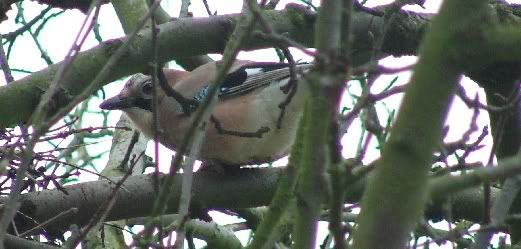 Jay
Jay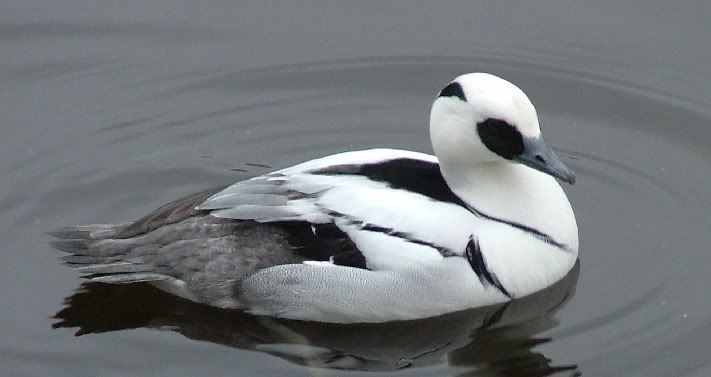 My favourite, the Smew in St James'.
My favourite, the Smew in St James'.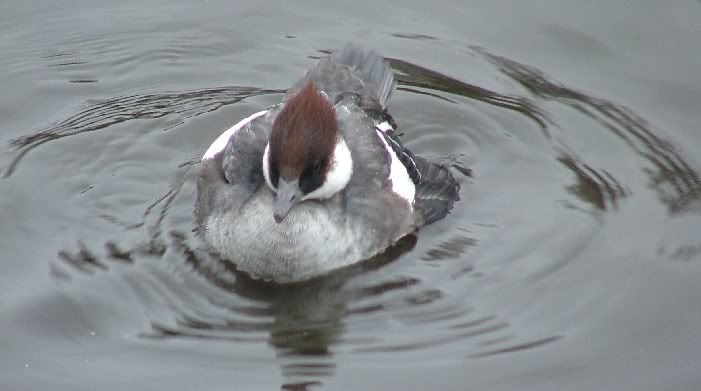
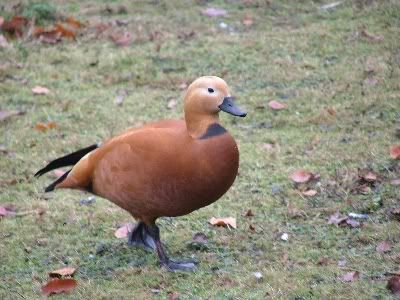 Ruddy Shelduck
Ruddy Shelduck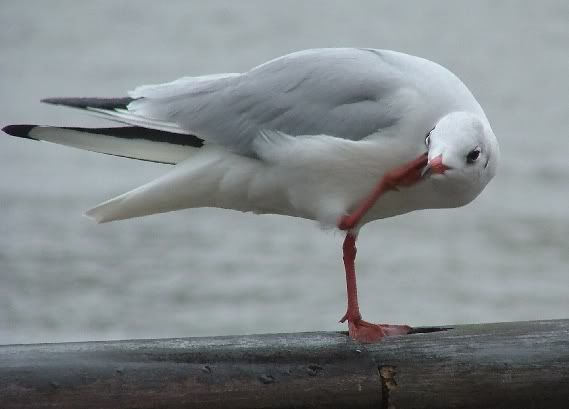 Black-headed Gull
Black-headed Gull